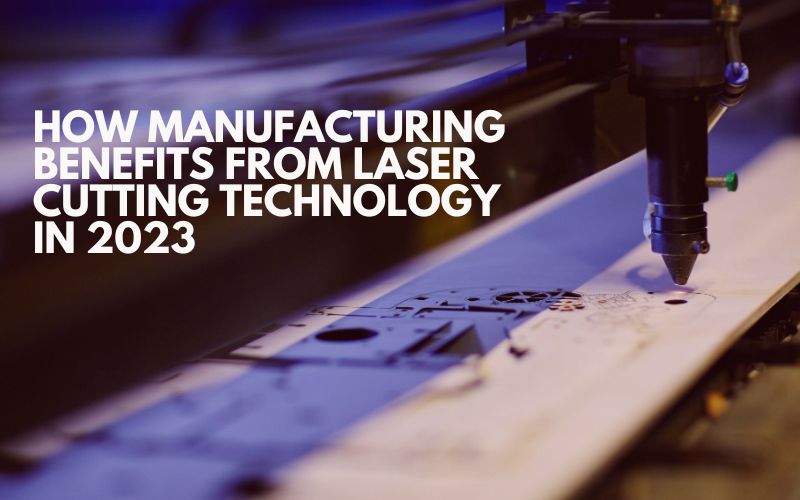
How Manufacturing Benefits from Laser Cutting Technology in 2023
Laser cutting technology is a manufacturing process that uses a laser to cut materials, such as metal, plastic, wood, or paper. It is a highly accurate and efficient method of cutting and has a number of benefits in manufacturing.
The Laser Cutting Technology – A brief overview
Laser cutting technology is a manufacturing process that uses a laser to cut materials, such as metal, plastic, wood, or paper. The laser is a high-energy beam of light that is focused and directed onto the material being cut. The beam is generated by a laser source, which can be a solid-state laser, a gas laser, or a liquid laser.
To perform laser cutting, the material being cut is placed on a bed and a nozzle is used to direct the laser beam onto the material. The laser beam is focused through a lens, and the intensity of the beam is adjusted to the specific material being cut. The beam is then directed through a computer-controlled system that guides the movement of the beam and determines the shape of the cut.
Laser cutting is a highly accurate and efficient method of cutting, and is used in a variety of industries, including automotive, aerospace, and medical device manufacturing. It is capable of cutting through a wide range of materials with varying thicknesses, and can produce complex shapes and intricate designs with a high level of precision.
Benefits of Laser Cutting in manufacturing
Some of the benefits of laser cutting technology in manufacturing include:
- Precision: Laser cutting allows for extremely precise cuts, with a tolerance of just a few thousandths of an inch. This is especially useful for manufacturing parts that require tight tolerances or intricate designs.
- Speed: Laser cutting is a fast process, and can cut through materials at a much faster rate than other methods such as mechanical cutting or waterjet cutting.
- Versatility: Laser cutting can be used to cut a wide range of materials, including metals, plastics, wood, and paper. It is also capable of cutting through materials with varying thicknesses, making it a versatile option for manufacturers.
- Cost efficiency: Laser cutting is a cost-effective method of cutting, as it requires fewer tool changes and can produce parts faster than other methods. This can lead to lower production costs for manufacturers.
- Quality: Laser cutting produces clean, precise cuts with minimal burrs or other defects. This can result in higher-quality parts and reduced rework, leading to improved efficiency and productivity.
How to get the best quality laser cutting in manufacturing
There are several factors that can affect the quality of laser cutting in manufacturing, and here are some steps you can take to ensure the best quality results:
- Choose the right laser: Different types of lasers are better suited for cutting different materials. For example, a CO2 laser is typically used for cutting non-metallic materials such as wood, plastic, or paper, while a Nd:YAG laser is better suited for cutting metallic materials. Choosing the right laser for your application can help ensure the best quality cuts.
- Properly focus the laser: The laser beam needs to be properly focused in order to achieve the best quality cuts. This is especially important when cutting materials with varying thicknesses.
- Use the right cutting parameters: The speed, power, and gas pressure of the laser can all affect the quality of the cut. Experimenting with different parameters and finding the optimal settings for your specific material and application can help improve the quality of the cuts.
- Use the right assist gas: An assist gas is used to help the laser cut through the material. The type and pressure of the assist gas can affect the quality of the cut. Using the right assist gas and setting the pressure correctly can help improve the quality of the cuts.
- Use the right cutting nozzle: The nozzle is the part of the laser cutting system that directs the laser beam onto the material being cut. Using the right nozzle for your specific material and application can help improve the quality of the cuts.
- Maintain and calibrate the laser cutting system: Regular maintenance and calibration of the laser cutting system can help ensure that it is performing at its best and producing the highest quality cuts.
By following these steps, you can help ensure the best quality laser cutting in your manufacturing process.



